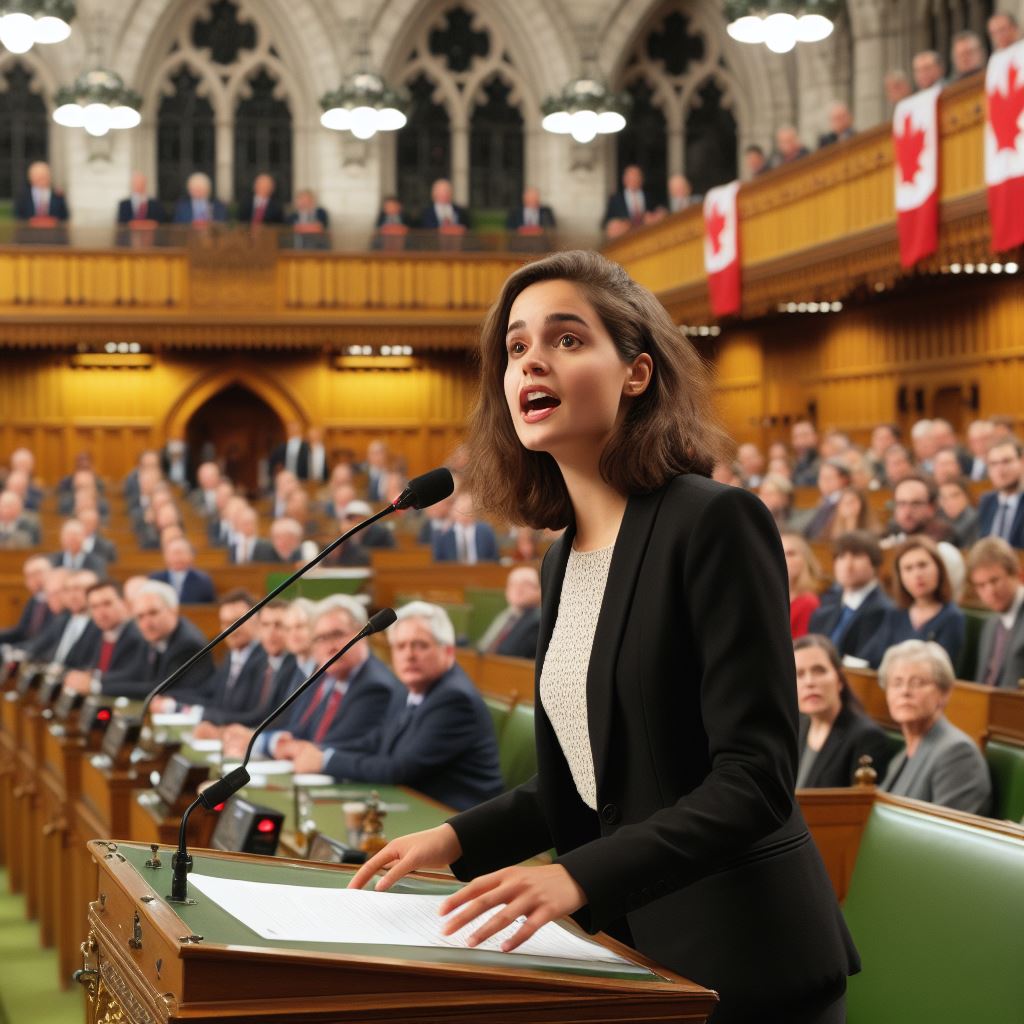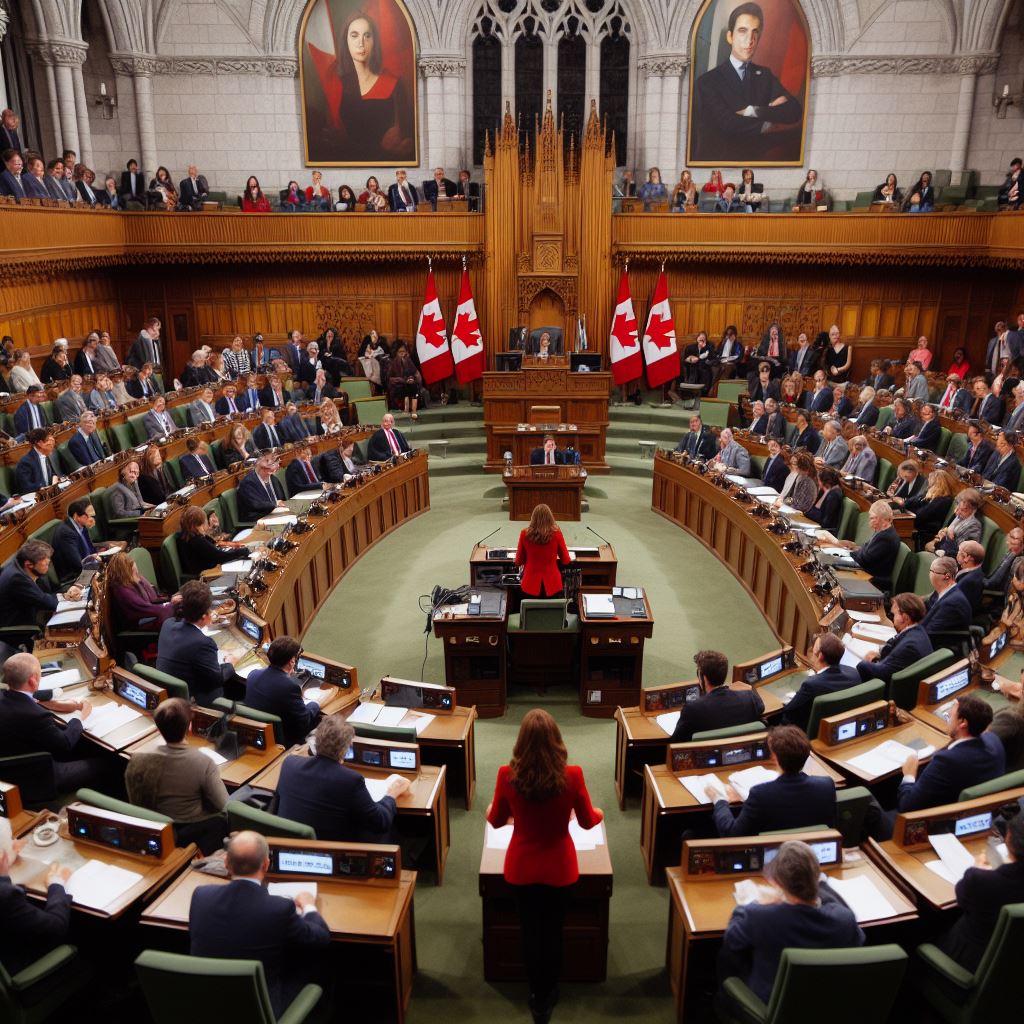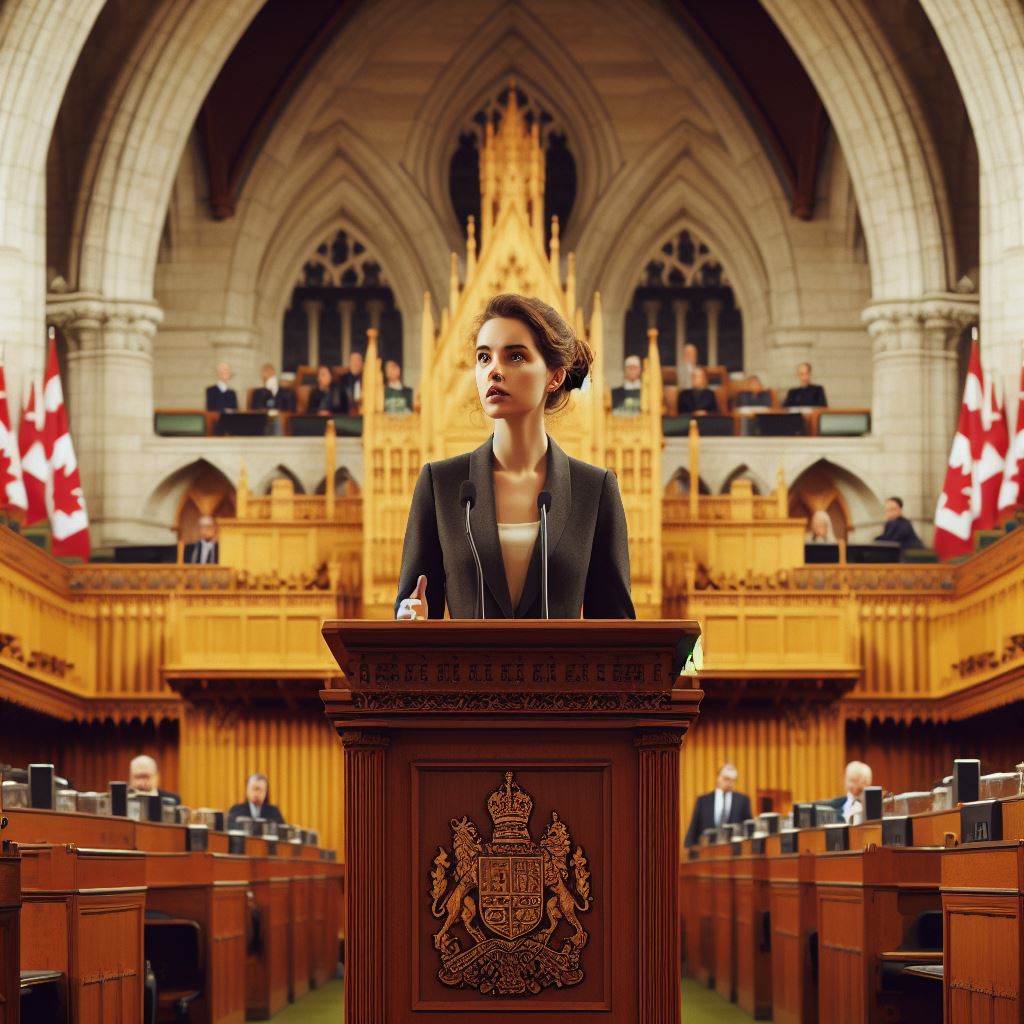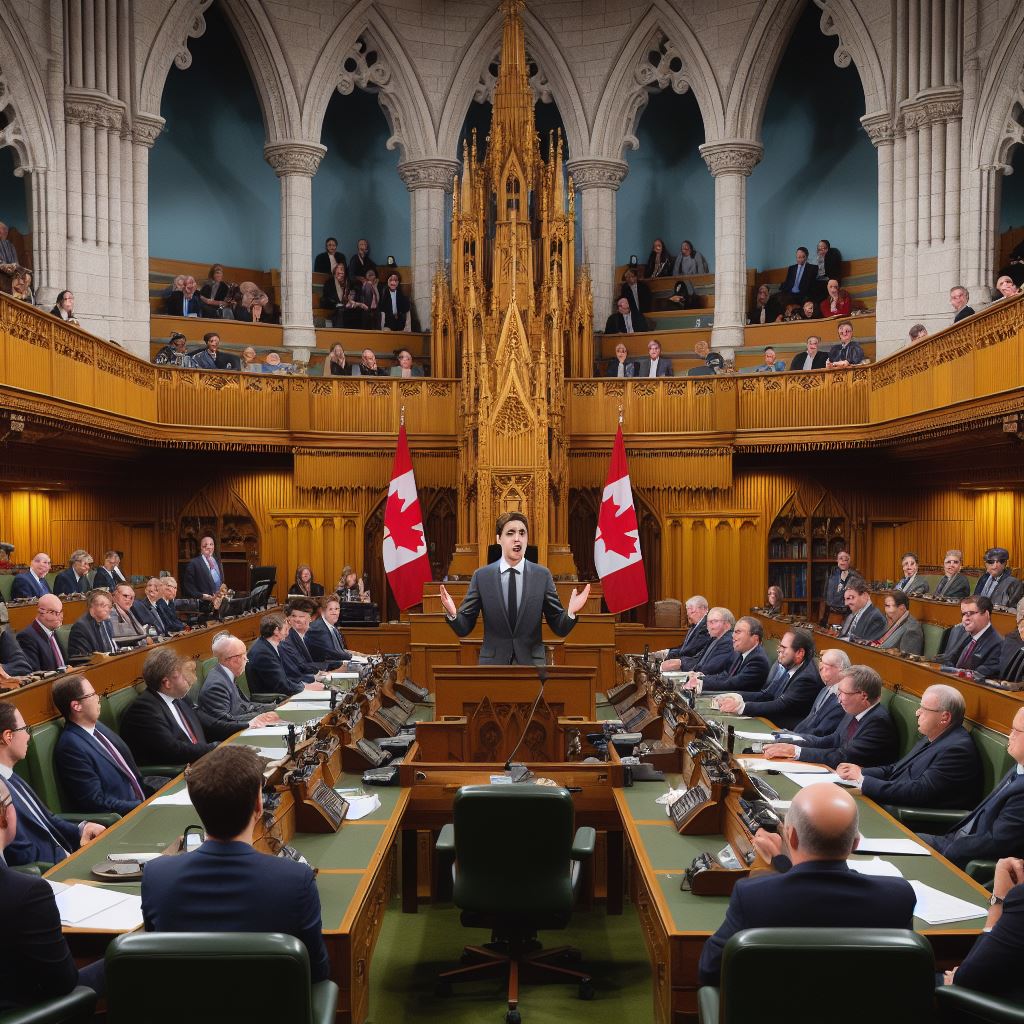Introduction
Canada has a multi-party system that includes many political parties, such as the Liberal Party, Conservative Party, and New Democratic Party.
Understanding these parties is crucial for Canadian citizens to make informed decisions in elections.
The political party system in Canada is a crucial aspect of the country’s democratic process.
It provides a platform for various ideologies and allows citizens to choose representatives who align with their beliefs and values.
Understanding political parties in Canada is important for citizens as it enables them to make informed decisions during elections.
By knowing the policies, goals, and values of each party, voters can choose the one that best represents their interests.
Political parties play a significant role in shaping government policies and decision-making processes.
They bring together like-minded individuals to form a united front and advocate for their shared agenda.
Parties also act as a bridge between citizens and the government, allowing citizens to express their concerns and opinions.
In addition, political parties are responsible for ensuring democratic governance.
Through party discipline, members are accountable to their party’s platform and are expected to represent their constituents’ interests in legislative bodies.
Understanding how political parties operate, including their funding, leadership, and membership, provides citizens with a holistic view of the political landscape.
This knowledge equips them with the tools to critically evaluate party platforms, analyze campaign promises, and hold elected representatives accountable for their actions.
In short, navigating political parties in Canada is essential for citizens to actively participate in the democratic process.
Understanding the different parties, their platforms, and the role they play in shaping government policies empowers individuals to make informed choices and contribute to the country’s political discourse.
Overview of Political Parties in Canada
History and evolution of political parties in Canada
The history and evolution of political parties in Canada can be traced back to the late 18th century.
Major political parties in Canada
The first political parties in Canada emerged during the early years of Confederation in the 1860s.
The Conservative Party of Canada, originally known as the Liberal-Conservative Party, was one of the earliest political parties.
The Liberal Party of Canada, founded in 1867, is another major political party in Canada with a long history.
Over time, other parties such as the New Democratic Party (NDP) and the Green Party have gained prominence.
Role of political parties in Canadian government
The role of political parties in the Canadian government is crucial as they form the basis of parliamentary democracy.
Political parties in Canada represent various ideologies, interests, and regional perspectives.
They play a vital role in selecting candidates, formulating policies, and competing in elections.
Political parties provide a platform for individuals to participate in the democratic process and influence government decisions.
They provide a sense of unity and solidarity among like-minded individuals who share similar political beliefs.
Unlock Your Career Potential
Visualize a clear path to success with our tailored Career Consulting service. Personalized insights in just 1-3 days.
Get StartedMajor political parties in Canada often field candidates in federal, provincial, and municipal elections.
Through party discipline, members are bound to follow the party’s positions on key issues and voting in unity.
Political parties in Canada also help shape public opinion, conduct research, and engage in policy debates.
Parties often have a leader who represents the party and leads its activities and campaigns.
The leader of the political party that gains the most seats in the House of Commons becomes the Prime Minister.
By forming government, political parties in Canada have the power to implement their proposed policies and legislate.
Political parties also play a role in holding the government accountable through opposition and scrutiny.
They contribute to the checks and balances within the Canadian parliamentary system.
The party with the second-highest number of seats becomes the official opposition and questions the government.
In fact, political parties are a fundamental aspect of Canadian democracy, representing diverse interests and shaping the government’s direction.
Understanding the history, major parties, and role of political parties is crucial to navigate Canadian politics effectively.
Whether supporting a party or engaging in public discourse, political parties play a significant role in influencing policies.
How to Identify and Understand Political Parties
Understanding these aspects will enable you to make informed decisions when engaging with political parties.
Here is how each factor contributes:
Party Platforms and Ideologies
Party platforms act as blueprints, offering insights into a party’s vision and policy commitments.
By evaluating different platforms, you can determine which party’s goals and values align with your own.
For example, if you consider healthcare a top priority, parties with strong healthcare proposals would be worth exploring.
Understanding the different ideologies will further help you identify parties that share your broader political beliefs.
Symbols and Party Branding
Symbols and branding play a crucial role in politics, as they help parties convey their principles and differentiate themselves from others.
For instance, the Liberal Party of Canada uses a red maple leaf as its logo, representing its progressive and inclusive approach.
By recognizing these symbols, you can quickly identify a party and its core values, facilitating your decision-making process.
Party Leaders and Key Figures
The chosen party leader often serves as a focal point and influences public opinions.
Their character, charisma, and communication abilities shape the party’s overall appeal.
For instance, a leader known for their economic expertise may attract voters concerned about financial matters.
Additionally, key figures within a party, such as influential MPs or policy experts, provide insights into the party’s intellectual direction and potential future leaders.
To conclude, understanding party platforms, symbols, and leadership dynamics is crucial for navigating political parties in Canada.
By analyzing these factors, you can align yourself with a party that reflects your values and aspirations.
Remember, active participation in the democratic process is essential, and your individual choices have the power to shape the course of the nation.
Read: Ethnic Diversity in Canadian Politics
Membership and Involvement in Political Parties
In order to navigate political parties in Canada, it is important to understand the process of becoming a member of a political party.
Becoming a member of a political party allows individuals to actively participate in the democratic process and have a say in the party’s direction.
Becoming a member of a political party
- To become a member of a political party in Canada, individuals must meet certain criteria set by each party.
- This typically includes being a Canadian citizen or permanent resident and paying a membership fee.
- Some parties may also require members to be of a certain age, such as 18 years old or above.
- Once the criteria are met, individuals can sign up for membership through the party’s website or by contacting the local party office.
- Membership applications are usually reviewed and approved by the party’s membership committee.
Benefits and responsibilities of party membership
- Being a member of a political party in Canada comes with various benefits and responsibilities.
- One of the main benefits is the opportunity to participate in the party’s decision-making processes.
- Members can vote in candidate nominations, policy discussions, and leadership elections.
- Party members also have the chance to shape the party’s platform, direction, and campaign strategies.
- Furthermore, party membership provides the opportunity to network and connect with like-minded individuals.
- Members can attend party events, meetings, and conventions where they can engage with other party supporters and politicians.
- Responsibilities of party membership include promoting the party’s values and principles.
- Members are encouraged to actively support the party’s campaigns and activities, both financially and through volunteering.
- They may also be involved in fundraising efforts, canvassing, and advocating for the party’s policies.
Participating in party activities and events
- Political parties in Canada offer a variety of activities and events for their members to get involved in.
- From door-to-door canvassing to organizing town hall meetings, members can make a tangible impact.
- Many parties also have youth wings and women’s associations that members can join to focus on specific issues.
- Party members can also participate in policy development through attending policy conventions and discussions.
- This allows them to have a direct influence on the party’s platform and policy proposals.
- Participating in party activities and events helps members build connections and gain political experience.
- It also provides a platform for members to voice their concerns, engage in debates, and contribute to the party’s agenda.
- By actively participating in party activities, members can make a meaningful contribution to their chosen political party.
- Ultimately, involvement in political parties allows individuals to shape the future of Canadian politics and democracy.
By becoming a member, enjoying the benefits, fulfilling responsibilities, and actively participating in activities and events, individuals can navigate the complex landscape of political parties in Canada and make their voices heard.
Read: Public Servants’ Role in Policy Making
Political Party Fundraising
Political party fundraising plays a crucial role in the Canadian political landscape.
Here, we will discuss the importance of fundraising for political parties, different methods and strategies for fundraising, and the transparency and regulations involved in party fundraising.
Importance of Fundraising for Political Parties
- Fundraising is essential for political parties to finance their activities and electoral campaigns.
- It allows parties to reach a larger audience, conduct research, and develop policy platforms.
- Financial resources obtained through fundraising help parties enhance their visibility and influence in the political arena.
- Fundraising also enables parties to purchase advertising, organize events, and engage with the public.
- Without adequate funding, political parties may struggle to compete effectively and convey their messages to voters.
Different Methods and Strategies for Fundraising
Political parties in Canada use various methods and strategies to raise funds.
Some of them include:
- Individual Donations: Parties rely on contributions from individual supporters, often in the form of donations.
- Membership Fees: Parties collect membership fees to finance their operations and campaigns.
- Corporate Donations: Parties may accept donations from corporations, although regulations limit the amount.
- Fundraising Events: Parties organize fundraisers, such as galas, dinners, and rallies, to gather financial support.
- Online Crowdfunding: Parties utilize online platforms to encourage small donations from a large number of individuals.
- Public Financing: Parties may receive public funding based on their electoral performance or the number of votes received.
Transparency and Regulations in Party Fundraising
Recognizing the potential for abuse, there are transparency measures and regulations in place for party fundraising:
- Disclosure Requirements: Parties must disclose their sources of funding and provide financial statements regularly.
- Limitations on Donations: Legislation sets limits on how much individuals and corporations can donate to parties.
- Ban on Foreign Donations: Political parties cannot accept donations from foreign entities or individuals.
- Conflict of Interest Rules: Regulations aim to prevent politicians and government officials from using their positions for undue influence.
- Auditing and Enforcement: Election authorities conduct audits and enforce compliance with fundraising regulations.
These measures aim to maintain transparency, ensure fairness, and prevent the influence of money from overshadowing the democratic process.
In essence, fundraising is paramount for political parties in Canada.
It enables parties to finance their operations, run successful campaigns, and engage with the electorate.
Various methods such as individual donations, membership fees, and fundraising events are employed, while regulations promote transparency, limit donations, and prohibit foreign interference.
By navigating the complexities of political party fundraising, parties can effectively participate in and shape the Canadian political system.
Read: The Impact of AI on Policy Analysis

Influencing Party Policies and Decisions
Ways in which citizens can influence party policies
When it comes to shaping party policies and decisions in Canada, citizens have several avenues to make their voices heard.
Here are some ways in which citizens can influence party policies:
- Joining and participating in political parties: One of the most direct ways for citizens to influence party policies is by becoming a member of a political party. By joining, individuals can attend party meetings and engage in discussions to shape policies.
- Active participation in party conventions: Political parties hold conventions where members discuss and debate various issues. Citizens can attend these conventions and voice their opinions on policies and decisions.
- Engaging in policy discussions: Citizens can participate in policy discussions through party forums, social media groups, or town hall meetings organized by political parties. Through active engagement, they can express their opinions and propose policy alternatives.
- Forming interest groups and associations: Citizens with shared interests can form interest groups or associations to advocate for specific policy changes. These groups often work closely with political parties to influence policy decisions.
- Contributing to policy development: Political parties regularly seek inputs from citizens on policy issues. Citizens can submit their ideas and suggestions to party members or through public consultations organized by the parties.
- Supporting candidates who align with their views: Citizens can support candidates during party nominations and elections who share their viewpoints on important policy matters. By campaigning or voting for these candidates, they indirectly influence party policies.
Political party conventions and policy platforms
In addition to these ways, political party conventions and policy platforms also play a significant role in shaping party policies and decisions:
- Political party conventions: These conventions serve as a platform for party members to gather, debate, and make decisions on party policies. Through resolutions and voting, members can influence the direction of the party.
- Policy platforms: Political parties develop policy platforms which outline their stance on various issues. Citizens can review these platforms and choose to support parties that align with their policy preferences.
Advocacy and lobbying within political parties
Furthermore, advocacy and lobbying within political parties can also impact policy decisions:
- Advocacy within political parties: Citizens can actively advocate for policy changes by organizing campaigns, mobilizing party members, and lobbying party officials. This direct engagement can influence party leaders and decision-makers.
- Lobbying: Individuals or interest groups can engage in lobbying activities by directly communicating with party leaders and elected representatives to express their views and influence policy decisions.
Overall, citizens in Canada have various means to influence party policies and decisions, whether it’s by joining parties, participating in conventions, engaging in policy discussions, or advocating for specific changes.
By actively engaging in the political process, citizens can make a meaningful impact on shaping party agendas and policies.
Read: Policy Analysts: Skills and Qualifications
Importance of Voting and Elections
Role of political parties in electoral process
- Political parties play a crucial role in the electoral process in Canada.
- They serve as a vehicle for individuals to participate in the political system.
- Parties nominate candidates for various offices, such as Members of Parliament or local representatives.
- These candidates represent the party’s values, ideologies, and policies.
- Party members campaign, raise funds, and mobilize support for their candidates during elections.
- Parties help shape the public discourse and debate on key issues affecting the country.
- They develop policies and platforms that guide their members’ decision-making process.
- Parties also organize rallies, town hall meetings, and other events to interact with voters.
- By doing so, parties contribute to the overall democratic process and political engagement.
- Through their campaign activities, parties aim to win seats and form the government.
How party affiliations influence voting decisions
- Party affiliations strongly influence the voting decisions of many Canadians.
- Political parties represent specific ideologies, values, and policy positions.
- People who align with a party’s ideals are more likely to vote for its candidates.
- Party loyalists support their preferred party consistently, regardless of individual candidates.
- Party identification creates a sense of belonging and shared values among supporters.
- These affiliations can be influenced by factors such as family background, social environment, and personal beliefs.
- Party members and supporters often trust their party to address their concerns and uphold their interests.
- They rely on party platforms and campaign promises to make informed voting decisions.
- Party affiliations also help voters navigate the complex political landscape and choose among multiple candidates.
- However, some voters may vote for candidates based on personal qualities or local issues, ignoring party affiliations.
Understanding party platforms when voting
- Party platforms outline a party’s goals, policies, and commitments if they form the government.
- Understanding these platforms is essential for making informed voting decisions.
- Platforms provide insights into a party’s stance on various issues, such as healthcare, economy, or environment.
- Voters can assess how closely a party’s platform aligns with their own values and priorities.
- Examining party platforms helps voters differentiate between parties and their policy proposals.
- Platforms offer a glimpse into a party’s vision for the future and their intended actions if elected.
- By comparing platforms, voters can evaluate the feasibility and impact of proposed policies.
- Party leaders often highlight key platform promises during election campaigns.
- Understanding party platforms ensures voters make choices that align with their interests and beliefs.
- However, it is essential to critically evaluate platforms and consider other factors when voting.
In general, political parties play a vital role in the electoral process in Canada.
Party affiliations strongly influence voting decisions, as they represent specific ideologies and policies that resonate with supporters.
Understanding party platforms is crucial for making informed decisions when voting, as they outline a party’s goals and commitments.
While party affiliations are important, voters should also consider other factors and evaluate candidates individually to ensure their choices align with their interests and beliefs.
Role of Political Parties in the Canadian Government
The role of political parties in the Canadian government is crucial to the functioning of the country’s democracy.
Political parties play a variety of roles in the government, including the formation of the government and majority/minority status, maintaining party discipline and loyalty, and serving as opposition parties.
Formation of Government and Majority/Minority
- Political parties are key players in the formation of the government in Canada.
- Following a general election, the party that wins the most seats in the House of Commons forms the government.
- If no party wins a majority of seats, a minority government may be formed through coalitions or cooperation agreements.
- The roles and responsibilities of the government are largely determined by the party in power.
- In a majority government, the ruling party has a significant mandate to enact its legislative agenda.
- In a minority government, the governing party must seek support from other parties to pass legislation.
Party Discipline and Party Loyalty
- Party discipline is a system wherein members of political parties are expected to vote in line with their party’s position.
- Political parties enforce party discipline through various mechanisms, such as party whips and caucuses.
- Members of Parliament are expected to follow their party’s stance on key issues.
- Party loyalty is essential for maintaining the unity and effectiveness of political parties.
- Party leaders have significant influence over their party members and can enforce discipline.
- Failure to comply with party discipline can result in consequences, including expulsion from the party.
Role of Opposition Parties
- Opposition parties play a crucial role in holding the government accountable.
- The official opposition in Canada is usually the party with the second-largest number of seats in the House of Commons.
- Opposition parties scrutinize government actions, policies, and legislation.
- They provide alternative perspectives and challenge the ruling party’s decisions.
- Opposition parties also play a role in shaping public opinion and raising awareness about issues.
- They question government ministers during Question Period and propose amendments to legislation.
- When a government fails to meet the needs of the citizens, opposition parties play a vital role in offering alternatives.
In a nutshell, political parties in Canada play significant roles in the functioning of the government.
They are responsible for forming the government, maintaining party discipline and loyalty, and serving as opposition parties.
These various roles ensure the accountability, effectiveness, and plurality of the Canadian political system.
Conclusion
Understanding and navigating political parties in Canada is crucial for citizens.
It enables them to make informed decisions and actively participate in shaping a better democracy.
By engaging with political parties, citizens can contribute their ideas, concerns, and feedback, ultimately influencing policy-making processes.
This active engagement empowers individuals to have a voice and be part of the democratic system.
Moreover, a deeper understanding of political parties allows citizens to differentiate between various ideologies, principles, and policy positions.
This knowledge helps in aligning personal values with a particular party and supporting candidates that reflect their beliefs.
Furthermore, navigating political parties involves staying informed about current issues, party platforms, and candidate backgrounds.
This information helps citizens in making informed choices during elections and holding elected officials accountable.
Overall, being actively involved with political parties not only benefits individuals but also fosters a stronger democracy.
It empowers citizens to shape the political landscape, promote representation, and influence the direction of the country.
Therefore, it is essential for citizens to actively engage with political parties, attending town halls, joining discussions, and participating in grassroots movements.
By doing so, they can have a direct impact on policies and contribute to a vibrant and inclusive democratic process.




